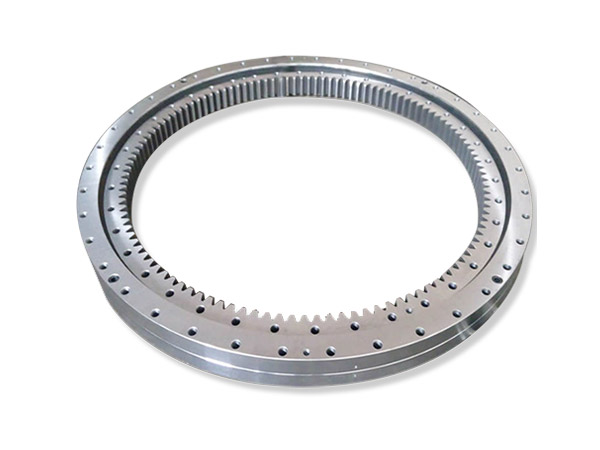What is the gear making process of slewing bearings
Gear processing is a time-consuming process in the production of slewing bearings, and it is also one of the main factors that have restricted the production efficiency of slewing bearings. Based on the actual machining data, the application of milling and hobbing processes in the processing of turntable bearing teeth is compared from the aspects of efficiency and cost, which provides a basis for the reasonable selection of turntable bearing teeth processing technology and equipment. Today, the editor will come to talk with you about the tooth-making process of slewing bearings.
1. Material selection of slewing bearing blank
Generally, 50Mn is used for the slewing bearing ring. After surface quenching, the raceway hardness is HRC55-62. However, sometimes 42CrMo is selected to meet the needs of the host for special applications, which has a higher hardness. LDB’s selection of blank suppliers has undergone strict screening and strictly follows the traceability procedure. For each blank, from receipt to finished product, it can trace the source of the blank according to its serial number, quality inspection and other whole-process data.

2. The technology of making gears from slewing bearings
1. The equipment used in the gear processing department still uses a large number of ordinary gear hobbing machines and gear shaping machines. Although it is convenient to adjust and maintain, the production efficiency is low. If a large capacity is completed, multiple machines are required to produce at the same time. In order to solve the problem of low processing efficiency, while increasing the number of gear hobbing machines and gear shapers, high-speed gear milling machines are used, which has high processing efficiency and good surface finish quality.
2. Some slewing bearings used under severe conditions require surface quenching treatment, such as excavators, pile drivers, wood grabs, graders and other operating conditions, which have relatively large impact loads and require quenching treatment on the tooth surface. The hardness after quenching of several sizes is between 45-60HRC. For common working conditions such as cranes and tower cranes, the tooth surface does not need to be heat treated.
3. With the rapid development of Industry 4.0, slewing bearings are more and more widely used in the automation industry. In this application field, the accuracy requirements for the teeth are relatively high, and the low requirements are also 8 levels of accuracy. In response to the rapid changes in the market, during the construction of the new plant, higher accuracy requirements are required for the equipment to meet the market demand.
4. After the tooth-making process is completed, there are follow-up processes such as fine turning, plane, drilling, track grinding, and assembly, and the slewing bearing can be shipped out of the factory.
3. Introduction to the failure analysis of the slewing bearing gear
1. Improper adjustment of the backlash of the large and small gears during installation, which did not meet the requirements, resulting in poor meshing of the two gears during operation, resulting in broken teeth. The backlash should be adjusted strictly as required.
2. Failure to adjust the meshing gap with the pinion at the maximum position of the gear jump as required, causing the pinion to jam when meshing with the maximum gear jump position during operation, causing tooth breakage. The meshing adjustment should be carried out at the position painted with green paint and the pinion gear should be adjusted according to the requirements for trial operation.
3. The axes of the large and small gears are not parallel, and the large and small gears mesh poorly after installation, causing tooth breakage. It should be ensured that the axes of the two gears are parallel.
4. The mounting bolts are not fastened tightly, and the gears of large and small meshes are not well meshed, causing gear breakage. The bolts should be tightened as required.


